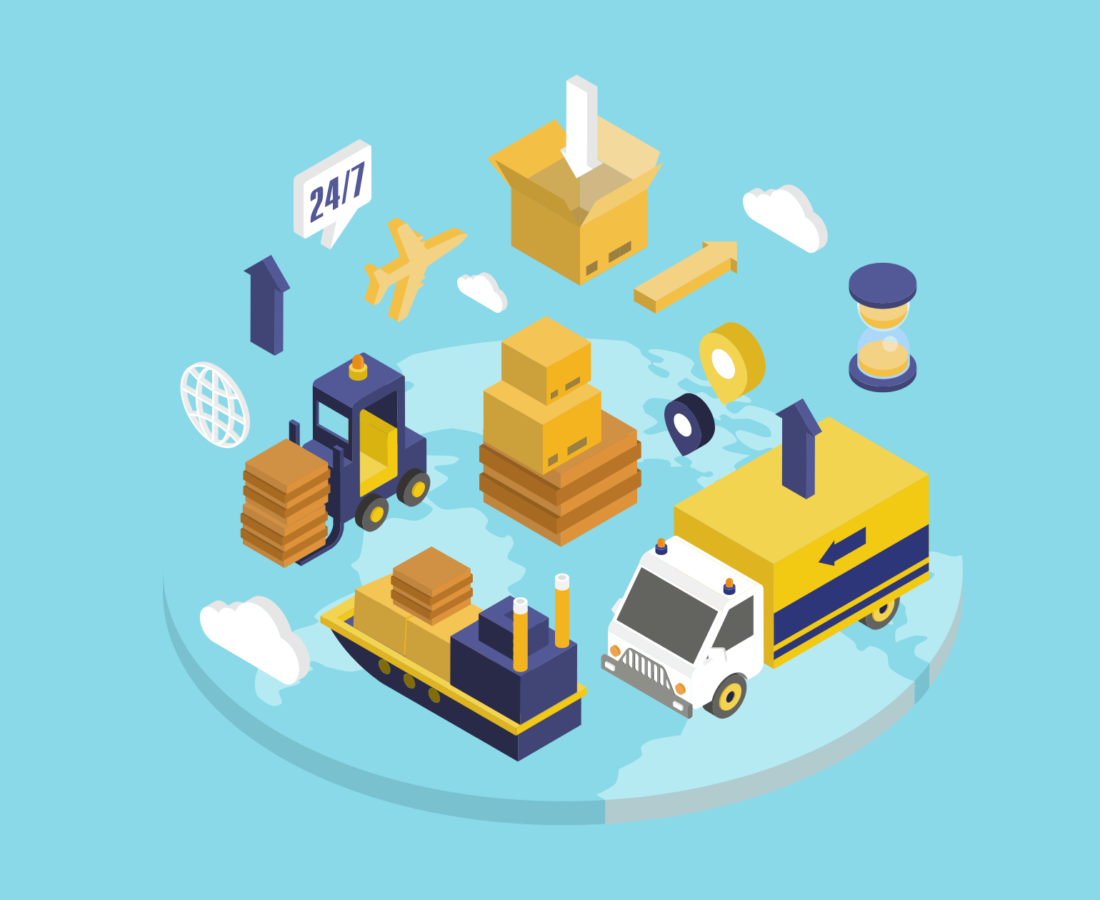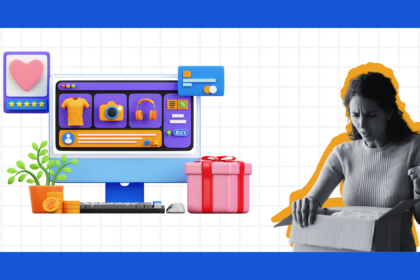Based on Statista’s prediction, global retail e-commerce sales are expected to grow 9.5% from 2023, a slight decrease from last year’s increase (10%). A line that we’ve all been hearing since the end of the pandemic and the dawn of the new age of e-commerce shopping is expected to return this year as well — while the growth rate is slow, e-commerce is still growing.
There are two ways to look at this.
- Customers are still open to shop online amidst the re-opening of brick-and-mortar stores
- E-commerce merchants are going to adopt new initiatives to spur more customers to spend time with their business
While the growth of e-commerce means so many things, it directly translates to higher parcel volumes. As consumers increasingly turn to online shopping, there exists a surge that places significant pressure on shipping carriers and the supply chain’s infrastructure.
Research predicts global parcel volume to grow from 8.5% through 2027. This necessitates continuous adaptations within the e-commerce and logistics spaces to handle the increasing demand and ensure timely and efficient order deliveries.
That said, 6,913 billion dollars being spent on an industry worldwide in a single year is a huge deal. The question is “How much % of it are you spending on growing your business”?
Knowing what other businesses are cooking, what industry leaders are predicting, and what is going to happen in the e-commerce logistics landscape can help you put your best foot forward and enjoy the fruits of success.
E-Commerce Logistics (B2C and B2B Parcel Shipping) Trends For 2024
Enter 2024, a year poised to be a turning point in the e-commerce logistics saga.
Businesses and consumers alike are consistently raising the bar. Sustainability, efficiency, and hyper-personalization are the new buzzwords. There is a consistent demand for revolution in how goods journey from virtual carts to living rooms.
So, what’s new, what’s hot, and what matters most? Here’s a straightforward article that covers the key trends you need to know to optimize your shipping strategy and deliver a seamless experience for your customers this exciting year.
Here’s something that you can expect inside:
- The newer role and impact of AI in logistics
- The need for sustainability in packaging and shipping
- The increasing demand for faster and efficient deliveries
- The evolution of customer expectations and hyper-personalization
- The changes in trade regulations and customs procedures
1. Integration of advanced technologies in the form of AI and machine learning
According to a recent report by McKinsey, 55% of business professionals confirmed that their organizations have already integrated AI technology into their operations. Also, with the e-commerce logistics industry expected to witness substantial growth in the adoption of AI in the upcoming years, businesses that haven’t tapped into using this technology will probably get left behind in the race toward redefining the game.
One of the primary roles of AI in e-commerce in 2024, is enabling predictive analytics and real-time data, helping businesses make data-driven decisions in areas like demand forecasting, route optimization, and inventory management. For example, with predictive analytics, retailers can better plan for seasonal fluctuations and avoid overstocking or stockouts. Also, with automated processes, there is a reduced workload on manual processes like paperwork, leading to lower errors, and delays and increased efficiency and cost-effective operations.
Ultimately, with access to AI technology, stakeholders who are dependent on the supply chain can make informed decisions quickly, adapt to changes, and respond to disruptions effectively, thereby making it a critical asset in today’s e-commerce environment.
What you can do to keep up: Make use of Inventory Management tools such as Zoho Inventory, Salesforce, etc, to forecast demand fluctuations, avoid stockouts, and ensure smoother deliveries.
2. A greater focus on sustainability
Amidst timely deliveries and growing technology, a trend that has witnessed a spike for the last couple of years is sustainability in logistics practices. This comes from the place of today’s shoppers’ growing awareness of environmental concerns and a desire for more eco-friendly practices and businesses catering to their needs.
Here are a few boxes that businesses are looking to tick in 2024 in the context of sustainability:
- Reduced packaging waste: E-commerce businesses are increasingly adopting practices that minimize packaging waste. This includes using packaging materials that are recyclable, or easily biodegradable. Also, businesses are optimizing packaging sizes to reduce the amount of excess material used.
- Green logistics: Major shipping carriers like DHL, FedEx, and UPS have always committed to reducing their massive carbon footprint from frequent order deliveries that they take up on a day-to-day basis. This involves taking up initiatives in the form of carbon–neutral shipping, EVs and other alternative fuels, efficient routing leading to lower fuel consumption, etc.
What you can do to keep up: Use eco-friendly materials for your packaging needs, prioritize shipping partners that use electric vehicles and other carbon-neutral delivery options, sustainable warehousing, etc, will all come together to minimize the environmental impact of e-commerce logistics. Don’t forget to promote yourself as an eco-conscious e-commerce brand and ensure that consumers favor you.
3. A shift towards customer-centric experiences
In today’s highly competitive e-commerce landscape, the CX that businesses provide acts as the competitive differentiator. This leads to brands increasingly adopting a customer-centric approach to cater to the evolving needs and expectations of online shoppers. This approach encompasses various strategies and initiatives aimed at enhancing the overall shopping experience and building customer loyalty.
2024, much like previous years, taking a customer-centric approach involves providing personalized product recommendations, having a user-friendly Interface to minimize friction in the buying journey, offering proactive responsive customer service channels, faster shipping and delivery options, flexible returns and exchanges, omnichannel experiences, etc.
Also, with the abundance of data available and customers willing to share their data for a more personalized experience, businesses are increasingly tailoring their logistics operations to individual customer preferences. This means not only personalized product recommendations but also customized delivery options including delivery preferences like time slots and delivery locations.
4. Increased focus on strengthening Cybersecurity
As we progress further into the digital age, the e-commerce industry has become a prime target for cyberattacks. The increasing digitalization of supply chains has made them vulnerable to various threats, ranging from data breaches to ransomware attacks. In 2024, cybersecurity will take center stage as companies strive to fortify their defenses and safeguard the integrity and trust of their operations.
This includes secure backups, network segmentation, employee training to recognize and prevent phishing attacks, and improved user identity verification methods.
Naturally, businesses can expect stricter regulations and cybersecurity measures to safeguard customer information and ensure the integrity of delivery systems. Additionally, the physical security of packages will be paramount, with advanced tracking and anti-theft solutions becoming commonplace.
What you can do: Cybersecurity tools like IBM and Kaseya to safeguard customer information and ensure the integrity of delivery systems. Additionally, physical security of packages is paramount, so make use of a post-purchase automation solution like LateShipment.com with real-time tracking to stay in the know of parcels at all times and communicate the same with your customers.
Over to You
2024 promises to be a turning point in e-commerce logistics. By embracing these trends, businesses can gain a competitive edge, build customer loyalty, and contribute to a more sustainable future of deliveries. Whether you’re a tech-savvy start-up or a seasoned retailer, buckle up and get ready for the thrilling ride ahead!








